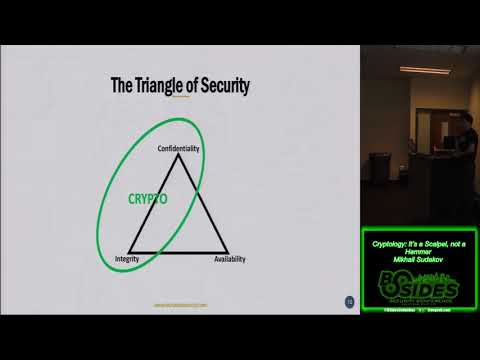Description:
Explore the fundamentals of cryptology in this 55-minute conference talk from BSides Columbus 2018. Delve into the history of classic ciphers, understand the Triangle of Security, and examine the four main adversarial capabilities. Learn about software bugs versus security vulnerabilities, the importance of randomness in encryption, and various encryption modes like CBC. Investigate concepts such as padding oracles, integrity, authentic encryption, and public key cryptography. Discover the significance of prime numbers, key exchange, and elliptical curve cryptography. Gain insights into password security, including the use of salt. Understand why cryptology should be viewed as a precise tool rather than a catch-all solution for cybersecurity challenges.

Cryptology - It's a Scalpel, Not a Hammer
Add to list
#Conference Talks
#Information Security (InfoSec)
#Cybersecurity
#Computer Science
#Cryptography
#Key Exchange
#Information Technology
#Data Management
#Data Integrity
#Public Key Cryptography
#Security Vulnerabilities